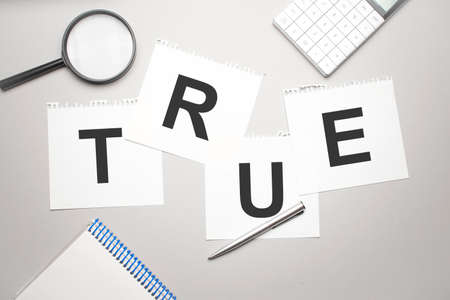1. What Is Duplicate Content?
In the world of SEO, duplicate content refers to blocks of text that appear on more than one web page—either within the same website or across different domains. This can confuse search engines like Google because they may struggle to decide which version to index or rank higher.
Common Types of Duplicate Content
Duplicate content isnt always intentional. Sometimes, it happens due to technical reasons or content management issues. Below are some common examples:
| Type | Description | Example |
|---|---|---|
| Exact Duplicates | Identical content published on multiple URLs | example.com/page-a and example.com/page-b showing the same article |
| Slight Variations | Pages with minor changes but largely the same content | Product pages with different colors or sizes but identical descriptions |
| Printer-Friendly Versions | A separate URL created for printing purposes, showing the same content as the main page | example.com/article and example.com/article/print |
| Session IDs in URLs | The same page accessible via different URLs due to session parameters | example.com/page?session=123 and example.com/page?session=456 |
Why It Matters for SEO
Google aims to show users the most relevant and original content. When duplicate content exists, search engines may not know which version to prioritize. This can lead to lower rankings or even filtering out some versions from search results entirely. While Google doesn’t penalize websites directly for duplicate content, it can impact your sites visibility if not handled properly.
Quick Facts About Duplicate Content:
- Not all duplicate content is malicious or spammy.
- Google tries to group duplicates together and pick one as the “canonical” version.
- You can help Google by setting canonical tags or using redirects when necessary.
Key Takeaway:
If your site has multiple pages with similar or identical content, its important to understand how that affects your SEO and what you can do to manage it effectively.
2. Common Sources of Duplicate Content
Duplicate content can sneak into your website in ways you might not even realize. Its not always about someone copying your blog post word for word — sometimes, its the structure and setup of your site that accidentally creates duplicates. Let’s take a look at some of the most common scenarios where duplicate content shows up:
Printer-Friendly Versions
Many websites offer printer-friendly versions of their pages to improve user experience. However, if these versions are not properly managed, they can be seen as separate pages with identical content.
Example:
| Original Page URL | Printer-Friendly URL |
|---|---|
| https://example.com/article-title | https://example.com/print/article-title |
If both URLs are indexed by Google without a canonical tag or proper directives, it could be flagged as duplicate content.
Session IDs in URLs
Session IDs are used to track users as they navigate your site, but when these IDs are added to the URL, they create multiple versions of the same page.
Example:
| User Type | URL Seen |
|---|---|
| User A | https://example.com/product?sessionid=12345 |
| User B | https://example.com/product?sessionid=67890 |
To search engines, these look like two different pages even though the content is exactly the same.
HTTP vs. HTTPS Versions
If your site is accessible through both HTTP and HTTPS, and both versions are indexed, youre serving up duplicate content without meaning to.
Example:
| Protocol | URL |
|---|---|
| HTTP | http://example.com/page |
| HTTPS | https://example.com/page |
This issue often arises during or after a site migrates to HTTPS but doesn’t properly redirect or set canonical URLs.
WWW vs. Non-WWW Versions
This is another common oversight. Your site might be accessible via both www.example.com and example.com — which Google treats as two separate domains unless told otherwise.
Example:
| Version | URL |
|---|---|
| WWW | http://www.example.com/page |
| Non-WWW | http://example.com/page |
You’ll want to pick one version and stick with it by setting preferred domain settings and using 301 redirects where needed.
E-commerce Product Pages with Multiple URLs
E-commerce sites often create different URLs for the same product based on filters or tracking parameters. This leads to many variations of the same page being crawled and indexed.
Example:
| Description | URL Example |
|---|---|
| Main Product Page | https://store.com/product/shoes-123 |
| With Color Filter Applied | https://store.com/product/shoes-123?color=red |
If these arent consolidated correctly, they can dilute SEO value and cause confusion for search engines.

3. How Google Detects Duplicate Content
Google has developed smart technologies and algorithms to detect duplicate content across the web. This helps ensure users get original, high-quality content in their search results. Let’s break down how this works in a simple way.
Content Fingerprinting
One of the main tools Google uses is called content fingerprinting. This means Google creates a unique “fingerprint” or digital signature for each piece of content it finds. If two pages have very similar fingerprints, Google can tell they’re duplicates—even if some words are slightly different.
How Content Fingerprinting Works:
| Step | Description |
|---|---|
| 1. Crawl the page | Googlebot visits your site and reads your content. |
| 2. Create a fingerprint | A digital signature is generated based on your content. |
| 3. Compare with others | This fingerprint is compared to those from other pages online. |
| 4. Identify duplicates | If matches are found, Google flags them as duplicate content. |
Canonical Tags
Canonical tags are HTML elements that help tell Google which version of a page is the “preferred” one when similar or duplicate content exists on multiple URLs. Website owners can use them to avoid being penalized for duplicate pages.
Example of a Canonical Tag:
<link rel="canonical" href="https://www.example.com/main-page/" />
This tells Google that even if the same content appears on another URL, the main version to index is at example.com/main-page/.
When to Use Canonical Tags:
- E-commerce sites with product pages accessible through multiple filters or categories.
- Blog posts shared on different URLs (e.g., tracking links or syndicated content).
- Pages with printer-friendly versions.
Syndicated and Scraped Content Detection
If your content appears on other websites (like syndication partners), Google looks at various signals to determine which version is original. These signals include publication date, domain authority, internal linking patterns, and more.
What Signals Help Google Decide the Original Source?
| Signal | Description |
|---|---|
| Date Published | The earliest published version is usually treated as original. |
| Backlinks & Authority | The version on a trusted site with strong backlinks may be favored. |
| Crawl Frequency | The page that was crawled first by Googlebot often gets priority. |
| User Engagement Metrics | Pages with more traffic and engagement might be seen as primary sources. |
By using these methods—content fingerprinting, canonical tags, and signal-based analysis—Google tries its best to show users the most relevant and original content available online.
4. Does Duplicate Content Hurt Your SEO?
Duplicate content is one of the most misunderstood topics in SEO. While many believe that having the same content in multiple places will lead to harsh penalties from Google, the truth is more nuanced. Lets break down how duplicate content actually affects your search rankings, crawl budget, and user experience — and separate fact from fiction.
Impact on Search Rankings
Google doesnt directly penalize websites for duplicate content, but it can still impact your sites visibility in search results. When Google encounters multiple pages with similar or identical content, it tries to determine which version is the most relevant or original and shows only that one in search results. This means your page might not appear at all if another version is considered more authoritative.
Common Misconceptions vs. Reality
| Myth | Reality |
|---|---|
| Duplicate content leads to a Google penalty | No penalty, but ranking may be diluted across duplicates |
| All duplicate content is harmful | Not all duplicates are bad—some are necessary (e.g., printer-friendly versions) |
| Google bans sites with duplicate pages | Google filters out duplicates, not bans them |
Crawl Budget Considerations
If your site has a lot of duplicated pages, Googlebot may spend time crawling those instead of discovering unique and valuable content. This is especially important for large websites with hundreds or thousands of URLs. Wasting crawl budget on redundant pages could delay indexing of new or updated content.
Tip:
Use canonical tags and robots.txt files to guide Googlebot to the preferred version of your content and prevent unnecessary crawling of duplicate pages.
User Experience Matters Too
From a visitors perspective, landing on different pages with the same information can be frustrating. It makes your website feel repetitive or untrustworthy, leading users to bounce and look elsewhere. Search engines take these signals into account when evaluating page quality and relevance.
How Duplicate Content Affects UX:
- Confusion: Users may not know which page to trust.
- Inefficiency: Repeated information adds no value.
- Lack of engagement: Visitors leave quickly if they don’t find fresh insights.
Understanding how duplicate content works—and debunking the myths around it—can help you make smarter decisions when managing your website. While its not always harmful, managing it properly ensures better rankings, efficient crawling, and a smoother experience for your users.
5. Best Practices to Avoid Duplicate Content Issues
When it comes to duplicate content, prevention is better than cure. Google doesn’t penalize every instance of duplicate content, but it can confuse search engines and dilute your rankings. To help your site stay clear of these issues, here are some straightforward best practices that anyone can follow.
Use 301 Redirects Wisely
If you have multiple pages with similar or identical content, use a 301 redirect to guide users and search engines to the preferred version. This tells Google which page to index and helps consolidate link equity.
Example:
If you move a blog post from /blog/my-post to /articles/my-post, set up a 301 redirect so visitors and search engines go to the new URL automatically.
Implement Canonical URLs
A canonical tag tells Google which version of a page is the “main” one. This is especially useful for e-commerce sites with product variations or filtering options that create similar URLs.
Best Practice Table:
| Situation | Solution |
|---|---|
| Multiple product URLs with different filters | Add a <link rel="canonical"> tag pointing to the main product page |
| Syndicated content on partner websites | Use a canonical tag pointing back to the original article on your site |
Keep Internal Linking Consistent
Linking to the same page using different URLs (like with or without “www” or “/index.html”) can confuse search engines. Always use a consistent format when linking internally.
Tip:
If your homepage is https://www.example.com/, don’t link to it as https://example.com/index.html. Pick one format and stick with it sitewide.
Syndicate Content Properly
If you share your content on other websites, make sure those platforms include a canonical link back to your original article, or at least mention that your site was the source. This helps avoid being outranked by syndicated versions of your own content.
Additional Quick Tips
- Avoid publishing printer-friendly versions of pages without blocking them in robots.txt or using canonical tags.
- Don’t let session IDs or tracking parameters create multiple versions of the same URL—use parameter handling in Google Search Console.
- Audit your site regularly using tools like Screaming Frog or Sitebulb to catch duplicate content early.
By following these simple strategies, you can help ensure your website stays clean in Googles eyes while improving user experience and preserving your SEO efforts.

